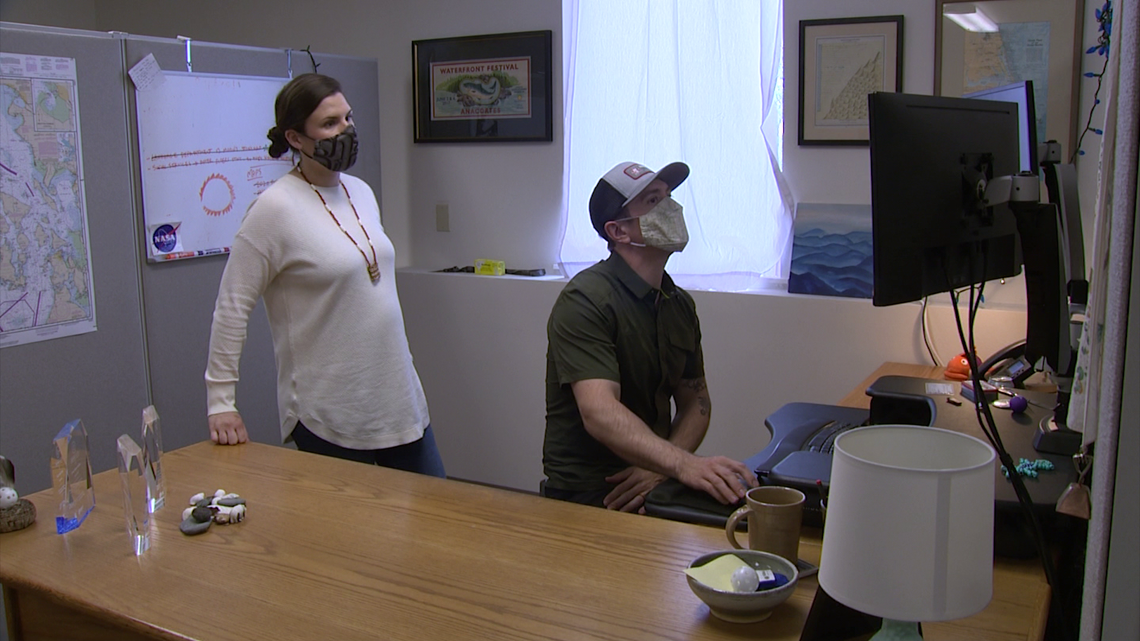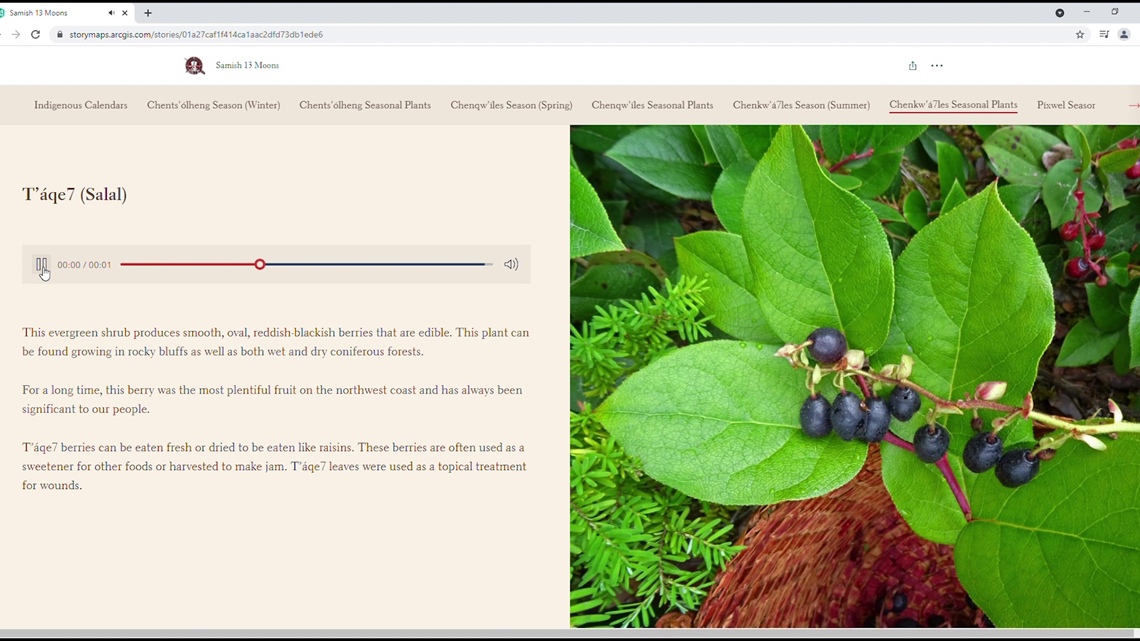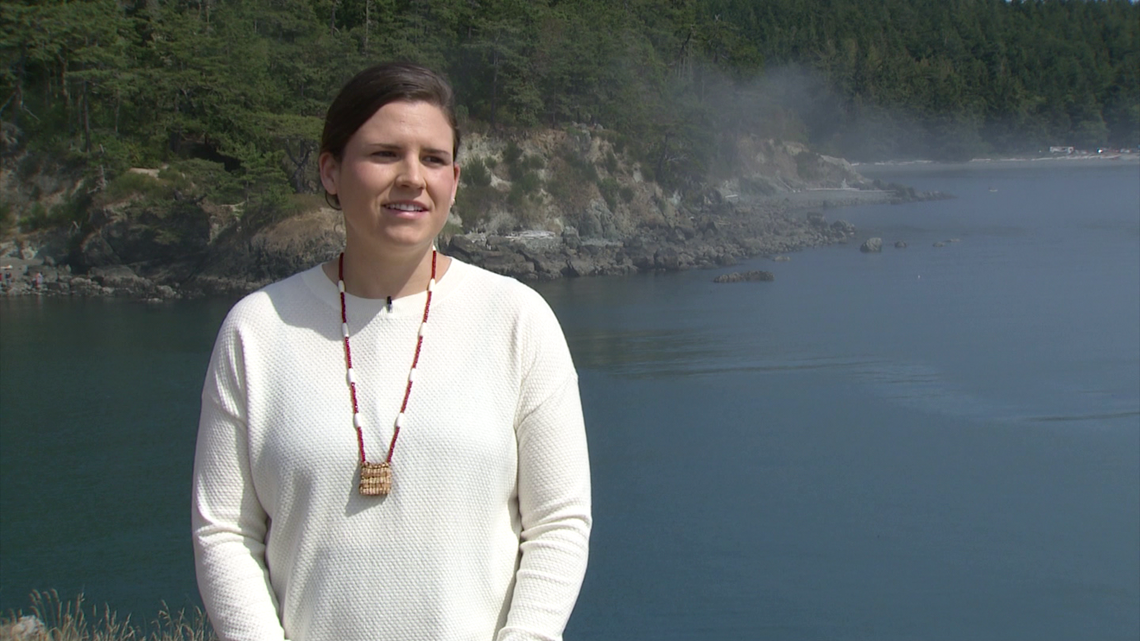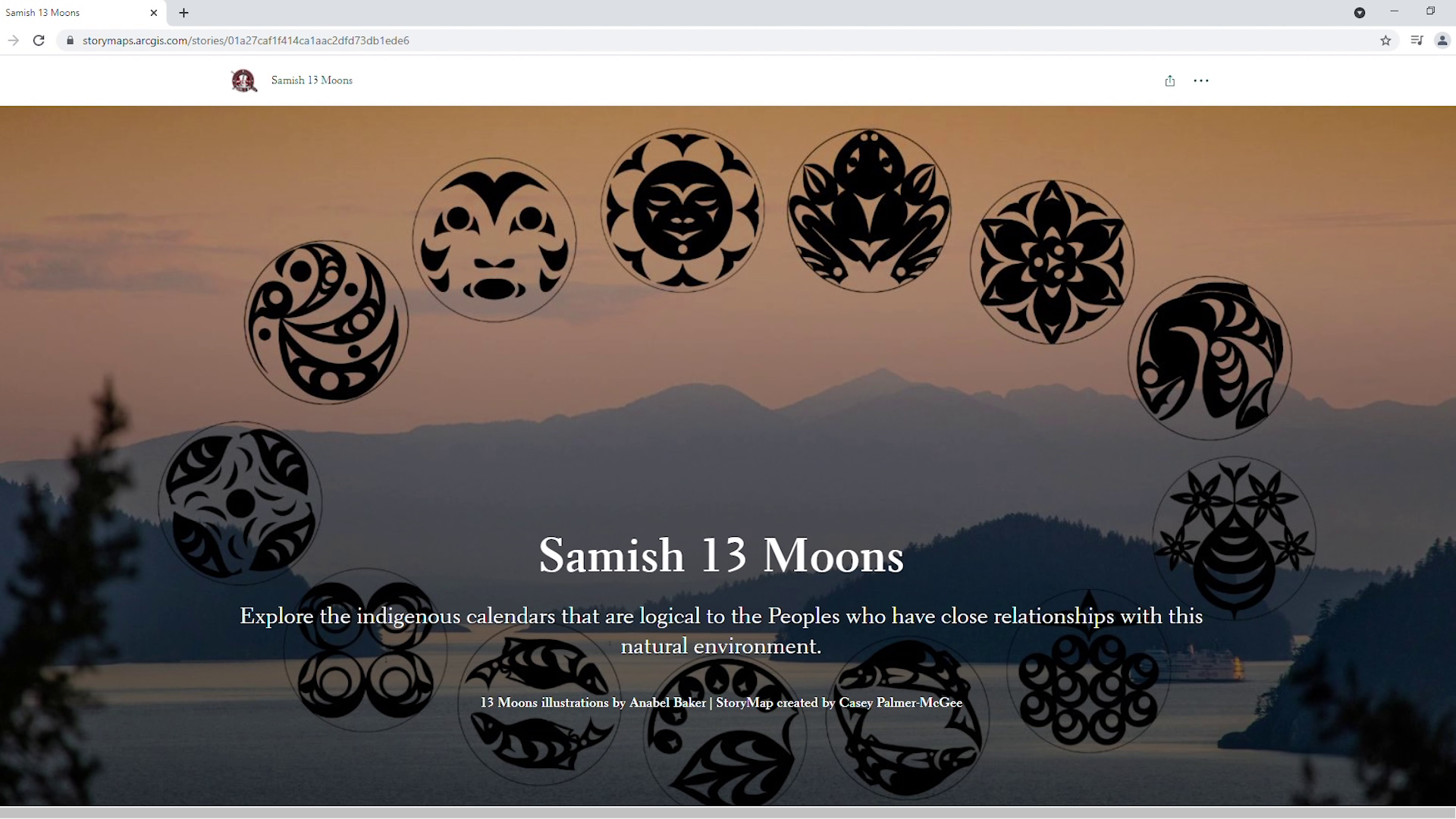Language is important to history and culture. If that language isn't passed on, it disappears like a waning moon. To solidify this message, Samish citizen Kelly Hall and GIS project manager Casey Palmer-McGee created a virtual "story map" called 13 Moons.


“Each moon represents a different stage of the cycle where different activities happen for our Samish people,” Hall explained.
We all use a twelve-month calendar, but there are thirteen lunar cycles in a year. To Samish peoples, these "lunar cycles" are significant stages of activities that have been going on since time immemorial.
“The 13 Moons story map uses modern technology to tell our story of persistence through time,” Hall said.
In an effort to connect Samish people across the world to indigenous histories, traditions, and communities, Hall and Palmer-McGee developed 13 Moons as an easily accessible website.
“It has combined so many different types of multimedia content into one streamline story,” Palmer-McGee added.


As you scroll down the page, it takes you on a journey of the Samish Nation. Not just the thirteen lunar cycles but music, traditional stories and language.
“The language is important because it is at the center of who we are as Samish people.” Hall explained, “It reveals our world view, it connects us to our ancestors, it connects us to this place and through the language we're able to keep our culture alive.”
Sharing this language, Palmer-McGee emphasized, is vital to its preservation.
“Samish has to continue that movement forward or the language will disappear,” he said.
The Samish language is intrinsically connected to the land of the Samish people, so by teaching the language, 13 Moons connects citizens everywhere to the ancestral home they may not know personally.
“We have plosive sounds, we have sounds that are like whooshing,” Hall noted, “I've heard an elder say once that it sounds like the wind going through the trees or things like that. It's very connective to this place.”
The 13 Moons story map also has videos of how to use and harvest local plants.
“Our people have lived in this place and thrived off of the resources that are right here for thousands and thousands of years. We have an incredibly rich location for edible plants and medicines.”


The story map is not only educational but it's also a way to reach out to other Samish citizens around the globe and let everyone know, they are still here.
"We are the salt-water people like our ancestors before us. This is our Samish territory, the land of the Samish people. We are here, we have always been here, and we will always be here in this place,” Hall recited in the Samish language.
This project is particularly important to Hall for a very special reason:
“I'm about to be a mother of a Samish child and you know, knowing that we have resources like this that my children and grandchildren and great grandchildren can learn from means the world to me that's what this is all about.”


KING 5's Evening celebrates the Northwest. Contact us: Facebook, Twitter, Instagram, Email.

